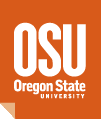 This past summer John DenHerder and Jill Ollivant, Class of 2015, began their externship at the Oregon Primate Research Center not sure what to expect. “I thought maybe we would be doing a lot of lab animal care,” says Ollivant. The reality was quite different — in a good way.
This past summer John DenHerder and Jill Ollivant, Class of 2015, began their externship at the Oregon Primate Research Center not sure what to expect. “I thought maybe we would be doing a lot of lab animal care,” says Ollivant. The reality was quite different — in a good way.
Ollivant and DenHerder rotated through multiple units at the center and had a wide variety of learning experiences. “Our time in the Surgical Services Unit was was extremely hands-on,” says DenHerder. “We were able to join other technicians who were practicing surgical procedures. These included catheter placement, intubation, duodenoscopy, bone marrow aspirate, and CSF tap.” They also observed laparoscopic-assisted ovariectomies.
In the Behavioral Services Unit, Ollivant and DenHerder learned about non-human primate behavior and spent time observing the primates in outdoor corrals, changing their toys to provide stimulation. “Environmental enrichment is extremely important to prevent the animals from getting bored and to improve research outcomes. This enrichment is provided in the form of toys, music, movies, foraging boards, pools in the summer, bamboo and climbing structures. These are rotated every so often to keep the monkeys interested,” says DenHerder.
The OSU students were surprised by how much focus is given to animal behavior. “The Primate Center employs a full-time crew of five to study and address the behavioral needs of these animals.” For the well-being of the animals in their care, the center houses them in pairs whenever possible, but just like humans, not every two primates are a good match for each other. “It is no easy task,” says DenHerder. “Singly-housed animals are observed for a period of time to determine which pairs may be compatible, then their cages are placed next to each other and more observations are made before they move in together. Still, some pairings do not work out and the process must start over again.”
Working with primates was a big change from the more typical internships involving domestic animals. “It is very important to read their behavioral cues and know something about their social hierarchy in order to work with them,” says DenHerder. “The biggest difference in working with primates, as opposed to most domestic pets, is that they need to be sedated for any procedure that requires them to be removed from their primary enclosure. Another difference is how crafty they are with those opposable thumbs! Despite additional precautions in bandaging, the monkeys still manage to rip off the bandage materials and or pick out their sutures.”
Both OSU students highly recommend this externship to CVM classmates. “You will gain valuable experience, learn to work with an intriguing species, and see how much goes into the welfare and ethical use of laboratory animals,” says DenHerder. “As an added bonus, you’ll get to feed peanuts to patients on the mend!”











